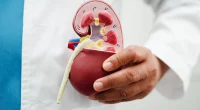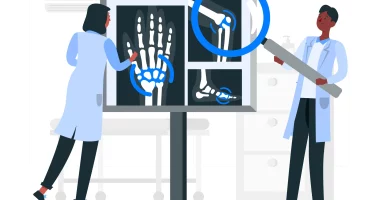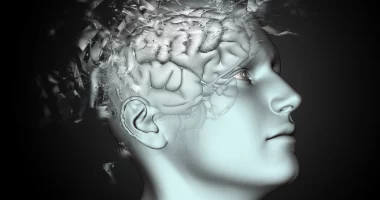Angioedema is a rapid swelling of the area beneath the mucosa or skin, often triggered by an allergic reaction or inherited genetic factors. This condition affects almost 10-20% of the population, manifesting as swelling in various loose tissue areas, including the face (such as tongue, mouth, and eyelids), limbs (hands or feet), and genitals. Unlike urticaria, which affects only the superficial skin layer, angioedema involves deeper layers like subcutaneous tissue, mucosa, and submucosal tissues. It’s not uncommon for individuals to experience both urticaria and angioedema simultaneously.
The swelling occurs due to fluid accumulation beneath the skin, akin to hives, but with a deeper impact. Despite its potential severity, with recorded associations with 5,768 deaths in the middle of 1979 and 2010, angioedema is often misunderstood and underrecognized.
Types
Angioedema manifests in four main types, each with distinct triggers and characteristics.
Allergic angioedema
The most prevalent form is allergic angioedema, commonly induced by allergens found in food, medications, pollen, venom, or animal or pet dander. In severe cases, it can escalate into anaphylaxis, a life-threatening allergic reaction marked by throat swelling and a sudden drop in blood pressure, necessitating immediate medical intervention. Fortunately, this type is not chronic, and avoidance of the allergen once identified can effectively prevent recurrence.
Drug-induced angioedema
Drug-induced angioedema arises from specific medications, notably angiotensin-converting enzyme (ACE) inhibitors and nonsteroidal anti-inflammatory drugs (NSAIDs). ACE inhibitors, used to manage hypertension, account for a significant proportion of emergency room visits due to angioedema. In such cases, alternative medications may be prescribed to alleviate symptoms.
Hereditary angioedema
Hereditary angioedema, although rare, affects a notable population, with roughly 6,000 individuals impacted in the United States. This type is characterized by dysfunctional or deficient C1 esterase inhibitor (C1-INH) protein, leading to recurrent episodes that may vary in frequency and severity over time.
Idiopathic angioedema
Idiopathic angioedema presents a challenge in diagnosis as its cause remains unclear, despite thorough medical evaluation. When typical triggers are ruled out, and no specific cause can be identified, it is classified as idiopathic, leaving treatment focused on managing symptoms rather than addressing a known underlying cause.
Symptoms
Angioedema symptoms typically manifest suddenly and can persist for up to three days, causing swelling below the skin’s surface in various areas such as the hands, feet, legs, genitals, eyes, throat, tongue, and bowel lining. Additional symptoms may include sensations of heat, prickling, or pain, accompanied by an itchy, red rash (urticaria), impaired vision, abdominal pain, bladder issues, and difficulty breathing. In serious cases, angioedema can escalate to anaphylactic shock, posing a life-threatening situation.
Immediate medical attention is crucial if an individual experiences sudden angioedema symptoms resembling an allergic reaction, breathing difficulties that are sudden, or feelings of faintness, dizziness, or collapse. For those aware of their allergy, having an autoinjector like an EpiPen on hand is advisable for prompt administration while awaiting medical assistance.
Causes
Angioedema’s causative factors vary depending on its type, ranging from allergic reactions to hereditary predispositions.
Allergic angioedema can be triggered by various stimuli, including insect, snake, or animal bites, exposure to latex, certain medications like aspirin or penicillin, and consumption of specific foods
Drug-induced angioedema commonly results from the use of ACE inhibitors or NSAIDs.
Hereditary angioedema is associated with a genetic mutation leading to dysfunctional or deficient levels of C1-1NH protein in the blood.
Additionally, other potential triggers include pregnancy, contraceptive pill usage, infections, and trauma.
In certain instances, despite thorough investigation, the cause of angioedema may remain unidentified.
Diagnosis
Diagnosing angioedema typically involves a thorough examination of symptoms, potential triggers, and the individual’s medical background.
Doctors rely on observing the manifestation of symptoms and gathering information about possible triggers, such as recent exposure to allergens.
Family history and medication records are also essential in pinpointing the type of angioedema present. For instance, a known allergen exposure or a family history of the condition may indicate allergic or hereditary angioedema, respectively.
Further diagnostic tests may be recommended to confirm the diagnosis and determine the specific type of angioedema. These tests could include a skin prick test to assess allergic reactions, blood tests to analyze immune system responses to allergens, or evaluations of C1 esterase inhibitor levels, especially when hereditary angioedema is suspected.
Treatment
Treatment strategies for angioedema are tailored to the specific type and underlying cause, with many cases resolving on their own within a few days.
For allergic angioedema, pinpointing and avoiding the triggering allergen is crucial for preventing recurrence and managing symptoms.
In cases requiring intervention, medications such as corticosteroids, antihistamines, or epinephrine (EpiPen) may be prescribed to alleviate symptoms.
For hereditary angioedema, while there’s no definitive cure, various treatment options aim to mitigate symptoms and reduce the frequency of episodes. These may include specialized medications, C1 inhibitor concentrates, supplementation of deficient proteins, or infusions of fresh frozen plasma.
In instances of sudden and severe swelling or breathing difficulties, immediate medical attention is imperative. Ensuring a patent airway is a priority, often necessitating the placement of a breathing tube for patient safety. Early intervention is critical in preventing potentially life-threatening complications.
Complications
When angioedema affects the airways and throat, it can cause serious problems by making it hard to breathe. This is an emergency, and it’s important to get help from a doctor right away. If breathing becomes too difficult, it can lead to a lack of oxygen in the body, which is very dangerous. So, it’s crucial to seek medical attention immediately to make sure you can breathe properly and get the help you need.
Summary
Angioedema is a condition characterized by sudden swelling beneath the skin or mucosa, with various triggers and types. From allergic reactions to hereditary predispositions, understanding the cause is vital for effective treatment. Diagnosis involves a thorough examination of symptoms and potential triggers, often complemented by diagnostic tests.
Treatment strategies range from identifying and avoiding allergens to medication management, depending on the type and severity. While most cases improve without intervention, emergency medical attention is imperative if symptoms affect the throat and airways, ensuring prompt intervention to prevent complications and ensure patient safety.








